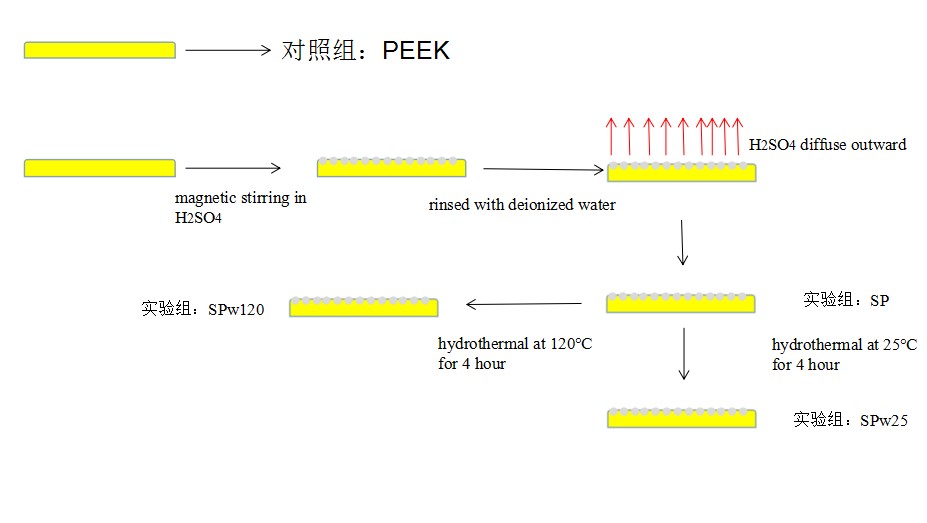璜化聚醚醚酮(PEEK)硫含量对于成骨及抑菌性的影响

Biomaterials 83 (2016) 115e126
|
聚醚醚酮(PEEK)由于与人体骨骼机械性能相似而成为理想的骨科及口腔外科内植入物,但其较低的生物活性及骨传导性成为制约其在临床应用的主要的限制。 香港大学Paul K. Chu教授科研团队在本研究中使用浓硫酸在PEEK表面形成3D孔隙结构。并使用不同温度进行处理,测试对于硫元素含量的影响。并使用间充质干细胞测试不同硫元素含量对于生长及骨分化的影响。并发现硫元素对于大肠杆菌及金黄色葡萄球菌具有较好的抑制作用。以兔大腿股骨为模型通过X线、CT、3维CT、组织切片等发现,含较少硫元素的材料对于骨生长分化及抑菌性都具有的作用。 Polyetheretherketone (PEEK) is desirable in orthopedic and dental applications because its mechanical properties are similar to those of natural bones but the bioinertness and inferior osteoconduction of PEEK have hampered many clinical applications. Hong kong university professor Paul K. Chu scientific work group, In this work, PEEK is sulfonated by concentrated sulfuric acid to fabricate a three-dimensional (3D) network. A hydrothermal treatment is subsequently conducted to remove the residues and the temperature is adjusted to obtain different sulfur concentrations. In vitro cell proliferation and real-time PCR analyses disclose enhanced proliferation and osteogenic differentiation of rat bone mesenchymal stem cells (rBMSCs) on the samples with small sulfur concentrations. The in vitro antibacterial evaluation reveals that all the sulfonated samples possess excellent resistance against Staphylococcus aureus and Escherichia coli. The in vivo rat femur implantation model is adopted.and X-ray, micro-CT, and histological analyses indicate that not only the premeditated injected bacteria cells are sterilized, but also new bone forms around the samples with small sulfur concentrations. (万腾) |